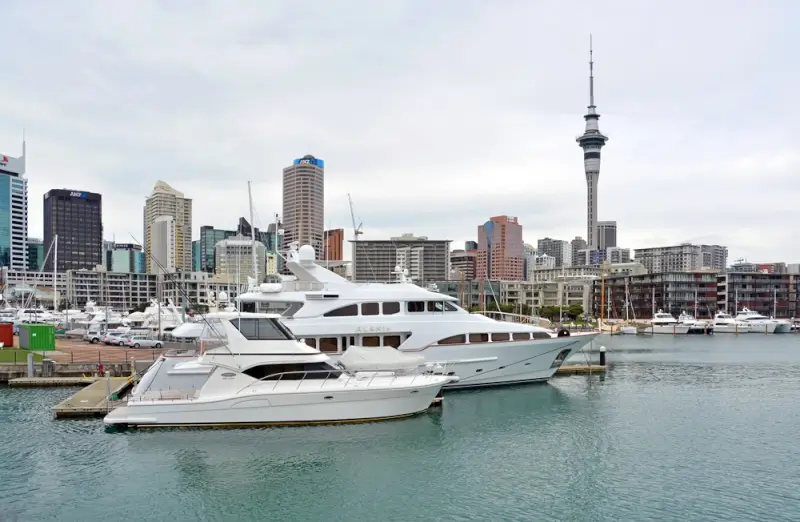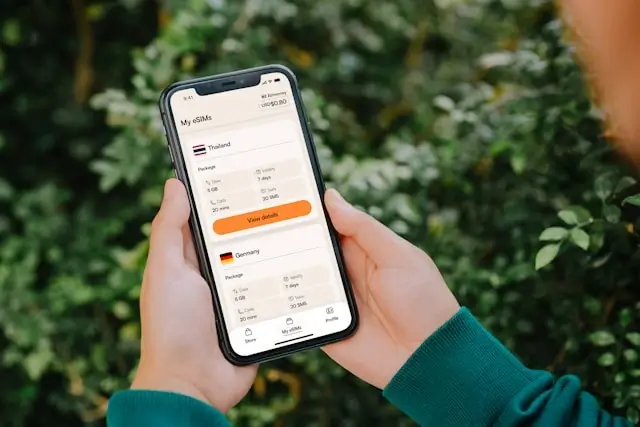Is the TooSIM eSIM the best eSIM for Oceania travelers planning to explore the region?
When it comes to traveling to Oceania, especially New Zealand—the land of surfers, volcanoes, and unpredictable roads—mobile internet becomes as important a piece of equipment as comfortable shoes.
It was on such a trip that the hero of this review decided to test TooSIM: does this eSIM card really make life easier for tourists, or is it just a nice idea?
TooSIM: Easy eSIM for Oceania Adventures

Why Every Traveler in Oceania Needs an eSIM
Those who have flown to this region know that roaming from European operators often hits the wallet harder than prices in New Zealand cafes. And communication stores are not everywhere, especially if your route is not through Auckland, but along Lake Taupo or to the Milford Sounds.
Therefore, a pre-installed eSIM with internet access is a real safety net:
- no need to search for a local SIM;
- no queues at airports;
- no “surprises” in your bill.
TooSIM is one of the services that offers regional rates for Oceania and local rates for New Zealand. Here's what a traveler found out from personal experience.
Connecting TooSIM: Quick, but Important to Remember the Details

It all starts at home: your smartphone must support eSIM. To check, see the list of compatible devices on the TooSIM website.
Activation is simple:
- purchase a plan online via the website or app;
- instantly receive a QR code;
- connect eSIM before departure or at the airport.
The main rule is to enable data roaming specifically for the eSIM profile so that your home operator does not start quietly charging you money.
Travelers have noted that TooSIM's instructions are clear and concise. Even after a 20-hour flight, your brain will be able to handle it.
Prices for the Oceania Region: Is It Worth it?

The rates are as follows:
| Data Volume | Term | Price |
| 1 GB | 7 days | $7.99 |
| 2 GB | 15 days | $10.99 |
| 3 GB | 30 days | $14.99 |
| 5 GB | 30 days | $22.99 |
| 10 GB | 30 days | $36.99 |
| 20 GB | 30 days | $61.99 |
| 50 GB | 30 days | $138.99 |
This option is suitable if the trip covers several countries in the region: Australia, Fiji, the islands, Tonga, etc.
However, since we spent most of his time in New Zealand, so for an honest test, we chose the local rate.
TooSIM Local Plans – for New Zealand
| Data Volume | Term | Price |
| 1 GB | 7 days | $4.99 |
| 2 GB | 15 days | $6.99 |
| 3 GB | 30 days | $8.99 |
| 5 GB | 30 days | $12.99 |
| 10 GB | 30 days | $17.99 |
| 20 GB | 30 days | $27.99 |
| 50 GB | 30 days | $61.99 |
Significant savings compared to regional rates.
Coverage and Speed: Honest Experiences Across Cities

| Data Volume | Term | Average Speed | Price |
| Auckland | V V V | LTE/5G 40–150 Mbps | Maps, videos, everything flies |
| Wellington | V V V | LTE ~35–90 Mbps | Great for work |
| Queenstown | V V | LTE is unstable | Sometimes dropping to 3G |
| National Parks | V | 3G / often no network | Mountains without people -and without a network |
| Milford Sound | X | – | Don't count on it, nature rules |
Traveler's conclusion:
In cities, TooSIM works as it should: navigation, messengers, stories — no problems. But as soon as the road leads into wild beauty, no operator is omnipotent there.
Traffic Consumption: How Long Will It Really Last?
The traveler introduced the usual norm:
| Action | Daily Traffic |
| Maps + navigation | ~200–400 MB |
| Social networks without videos | ~100 MB |
| Booking, translator | ~50 MB |
Total: 500–700 MB/day, and if TikTok or YouTube → all 1.5 GB.
Therefore, 3 GB for 30 days — only if used carefully.
He took 5 GB — that was enough for 12 days of traveling around the North Island with occasional posts on social media.
TooSIM's Strengths (in practice)

We noted several key advantages of TooSIM that really make traveling easier and save time.
- Easy to purchase and activate. The purchase and activation process for the eSIM is straightforward, even for those who have never used an eSIM before. The QR code is sent directly to your email, and the instructions are clear and free of unnecessary terminology.
- Works great in big cities. In Auckland, Wellington, and Christchurch, the internet is stable, and LTE/5G speeds allow you to use maps, messengers, and streaming without any problems.
- Great prices on local plans. Rates for New Zealand start at $4.99 for 1 GB, which is cheaper than most roaming offers and more cost-effective than buying a package locally.
- No need to look for communication stores. Everything is available in cities, but at the airport or in tourist areas, it is more convenient to activate eSIM online and immediately have access to the Internet.
- The app is convenient and simple. By downloading TooSIM on iOS or Android, you can manage all packages, view your balance, activation history, and instructions — everything is intuitive.
What We Encountered
But we also experienced limitations that are important to know in advance.
- Communication is limited away from cities. In the mountains, national parks, and on islands, the LTE signal sometimes disappears, leaving only 3G or no network at all.
- Only mobile internet (no local number). For calls over a regular network, you need to use VoIP apps such as WhatsApp, Viber, or Facetime.
- No top-ups — you have to buy a new package. Unlike regular SIM cards, you cannot top up your existing plan — you have to buy a new one if you run out of data.
- You need VoIP apps to make phone calls. Standard SMS and calls are not supported. But this is normal practice for tourist eSIMs.
There are no hidden problems, just limitations that are worth considering when planning your route.
Practical Tips for Travelers

To get the most out of your eSIM, the traveler gave several recommendations:
- Install the eSIM at home and activate it in New Zealand — this saves time and allows you to connect immediately upon arrival.
- Turn off mobile data on your main SIM card — to avoid accidental charges from your home operator.
- Download offline maps (Google Maps + Maps.me) — in case you lose signal in remote areas.
- Cache hotel reservations and itineraries so that you can access the information without an internet connection.
- Get a minimum of 5 GB of data if you are traveling actively and plan to use social media, maps, and videos.
Conclusion

TooSIM proved to be a reliable companion for exploring New Zealand and serves as a solid eSIM for Oceania travelers who value convenience and affordability.
The activation process is straightforward, the city coverage is excellent, and the local pricing makes it a smarter choice than traditional roaming.
Yes, there are limitations—remote areas remain a challenge for any provider, and you'll need VoIP apps for calls. But these are minor trade-offs for the freedom of landing with instant internet access and not hunting for SIM card shops.
For those planning an Oceania adventure, especially if your route includes major cities and tourist hubs, TooSIM delivers what matters most: stable connectivity without the hassle. Just remember to choose the right data package for your travel style, download offline maps, and you're set.
Disclaimer:
This post may contain affiliate links. I receive a small commission at no cost to you when you make a purchase using my link.








